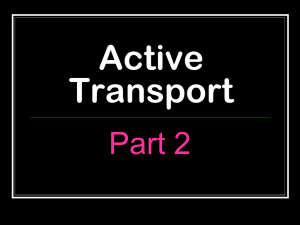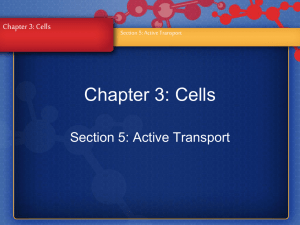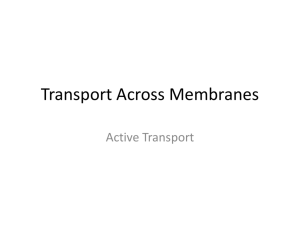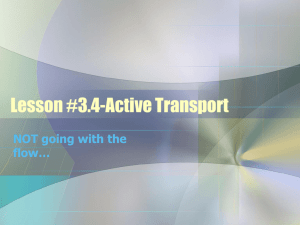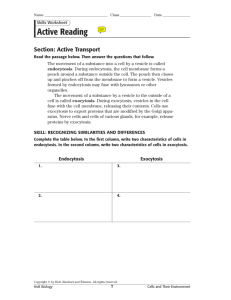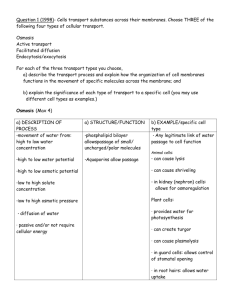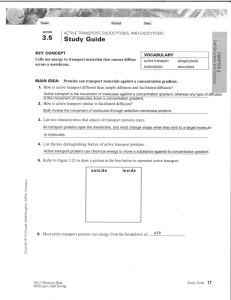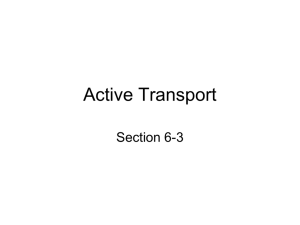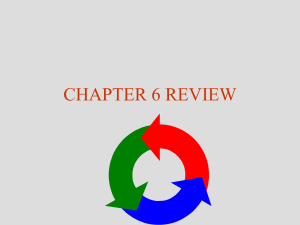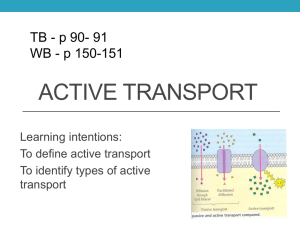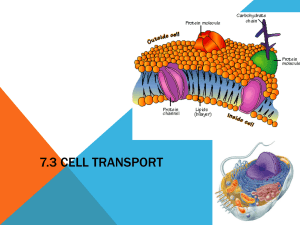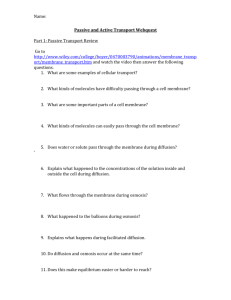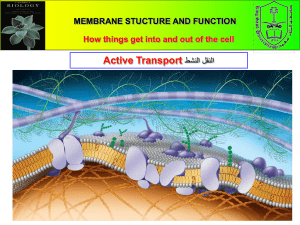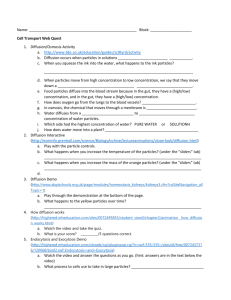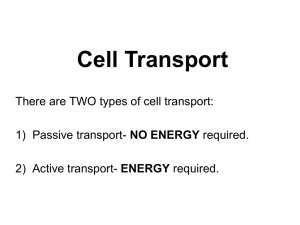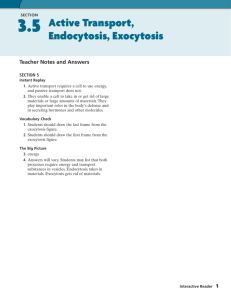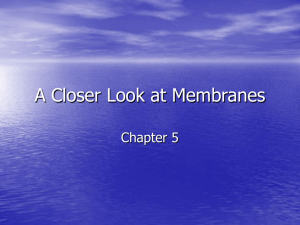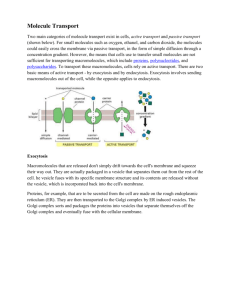Section 3.5 Study Guide
advertisement
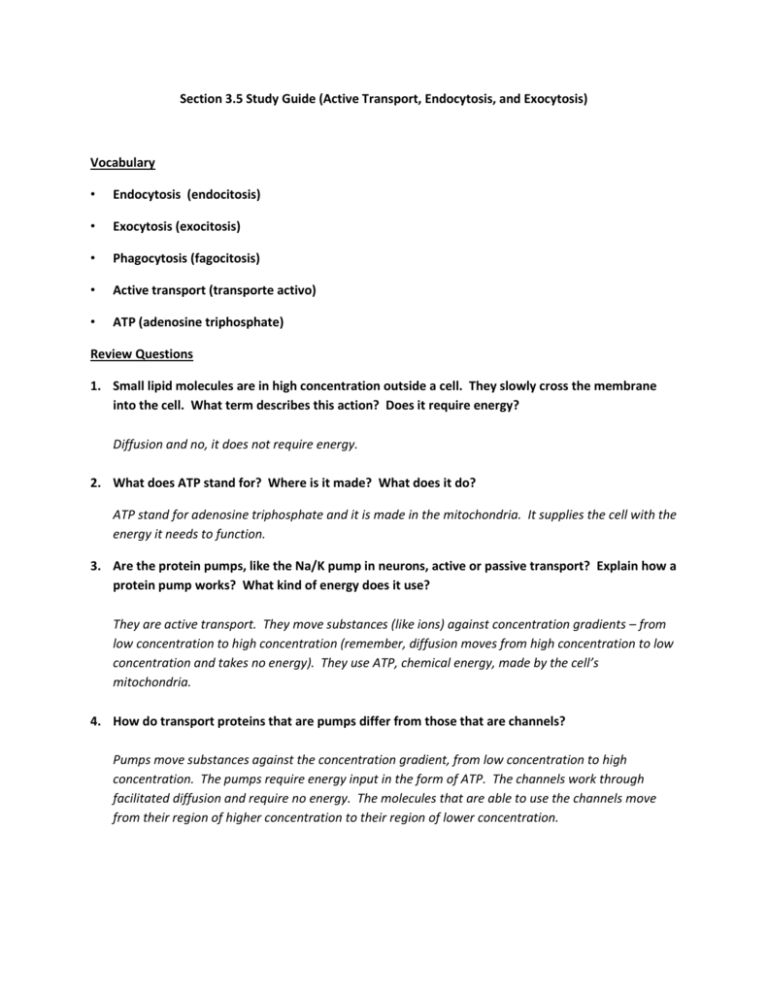
Section 3.5 Study Guide (Active Transport, Endocytosis, and Exocytosis) Vocabulary • Endocytosis (endocitosis) • Exocytosis (exocitosis) • Phagocytosis (fagocitosis) • Active transport (transporte activo) • ATP (adenosine triphosphate) Review Questions 1. Small lipid molecules are in high concentration outside a cell. They slowly cross the membrane into the cell. What term describes this action? Does it require energy? Diffusion and no, it does not require energy. 2. What does ATP stand for? Where is it made? What does it do? ATP stand for adenosine triphosphate and it is made in the mitochondria. It supplies the cell with the energy it needs to function. 3. Are the protein pumps, like the Na/K pump in neurons, active or passive transport? Explain how a protein pump works? What kind of energy does it use? They are active transport. They move substances (like ions) against concentration gradients – from low concentration to high concentration (remember, diffusion moves from high concentration to low concentration and takes no energy). They use ATP, chemical energy, made by the cell’s mitochondria. 4. How do transport proteins that are pumps differ from those that are channels? Pumps move substances against the concentration gradient, from low concentration to high concentration. The pumps require energy input in the form of ATP. The channels work through facilitated diffusion and require no energy. The molecules that are able to use the channels move from their region of higher concentration to their region of lower concentration. 5. How do endocytosis and exocytosis differ from one another? Endocytosis is the process of taking liquids or fairly large molecules into a cell by engulfing them in a membrane (see page 90 or your book or my notes to see a diagram of how endocytosis works). Exocytosis is the opposite of endocytosis. It is the release of substances out of a cell by the fusion of a vesicle with the cell membrane (see page 91 of the book or my notes). 6. List one function that exocytosis carries out in the human body? The release of neurotransmitters into the synaptic cleft by a neuron (nerve cell). There are innumerable other functions such as protein transport from inside a cell to outside of a cell. 7. What might happen if vesicles in your neurons were suddenly unable to fuse with the cell membrane? Our nervous systems would cease to function. Neurons would be unable to release neurotransmitters if exocytosis were not possible. 8. How do endocytosis and exocytosis differ from diffusion? They require energy input; diffusion does not. They also enable larger particles to enter and exit a cell, particles that are too large to diffuse across a cell membrane. 9. Ions are in low concentration outside a cell. They move rapidly into the cell via protein molecules. What term describes this action? Does it require energy? Active transport and yes, they require energy. The protein molecules are the “protein pumps.” 10. Under what conditions would a molecule need to be actively transported across a membrane? If it were moving from a region of low concentration to a region of high concentration. In other words, if the molecule needed to move against the concentration gradient. 11. What term means cell eating and describes a type of endocytosis? Name a type of cell that represents this process. Phagocytosis. Your white blood cells find foreign materials, such as bacteria, and engulf and destroy them. 12. Please sketch, on a different sheet of paper, molecules entering a cell by active transport and passive transport. 13. Also, please sketch the processes of endocytosis and exocytosis.
